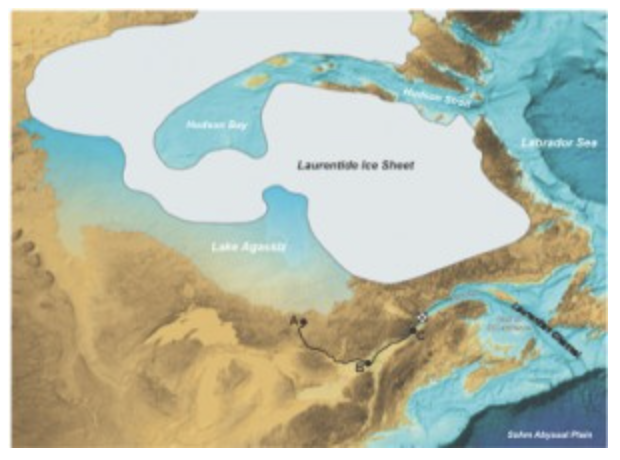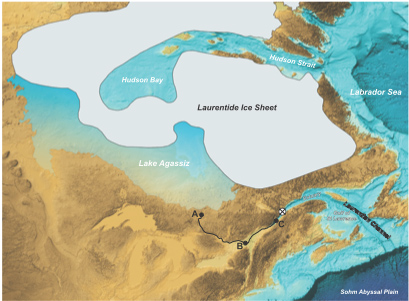
A cold event at around 8200 calendar years BP and the release, at around that time, of a huge freshwater outburst from ice-dammed glacial Lake Agassiz have lent support to the idea that the flood triggered the cold event. Some suggest that the freshwater addition caused a weakening of the North Atlantic meridional overturning circulation (MOC) thereby reducing the ocean transport of heat to high northern latitudes. Although several modeling efforts lend strength to this claim, the paleoceanographic record is equivocal. The authors’ aim is to use a coupled ocean–atmosphere model to examine the possibility that the two events are causally linked but that MOC reduction was not the main agent of change. It is found that the outburst flood and associated redirection of postflood meltwater drainage to the Labrador Sea, via Hudson Strait, can freshen the North Atlantic, leading to reduced salinity and sea surface temperature, and thus to increased sea ice production at high latitudes. The results point to the possibility that the preflood outflow to the St. Lawrence was extremely turbid and sufficiently dense to become hyperpycnal, whereas the postflood outflow through Hudson Strait had a lower load of suspended sediment and was buoyant.
See paper : Clarke, Bush & Bush (2009) .
